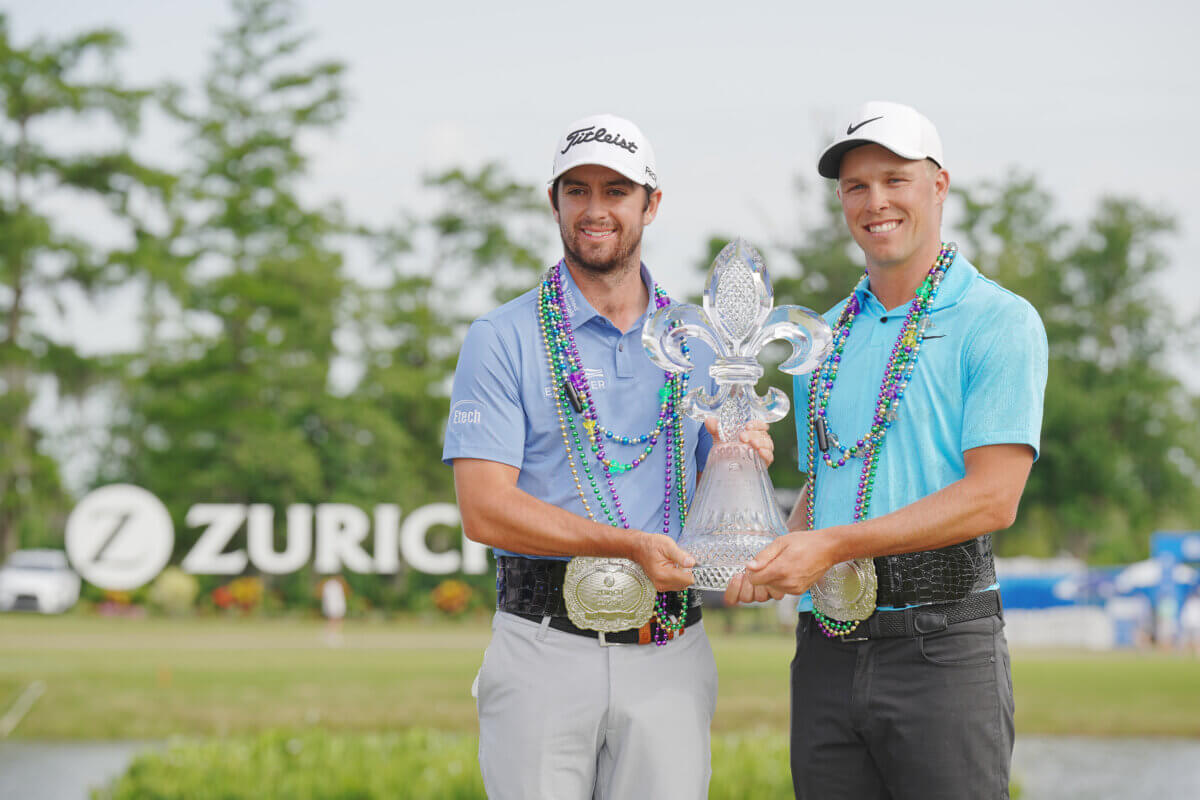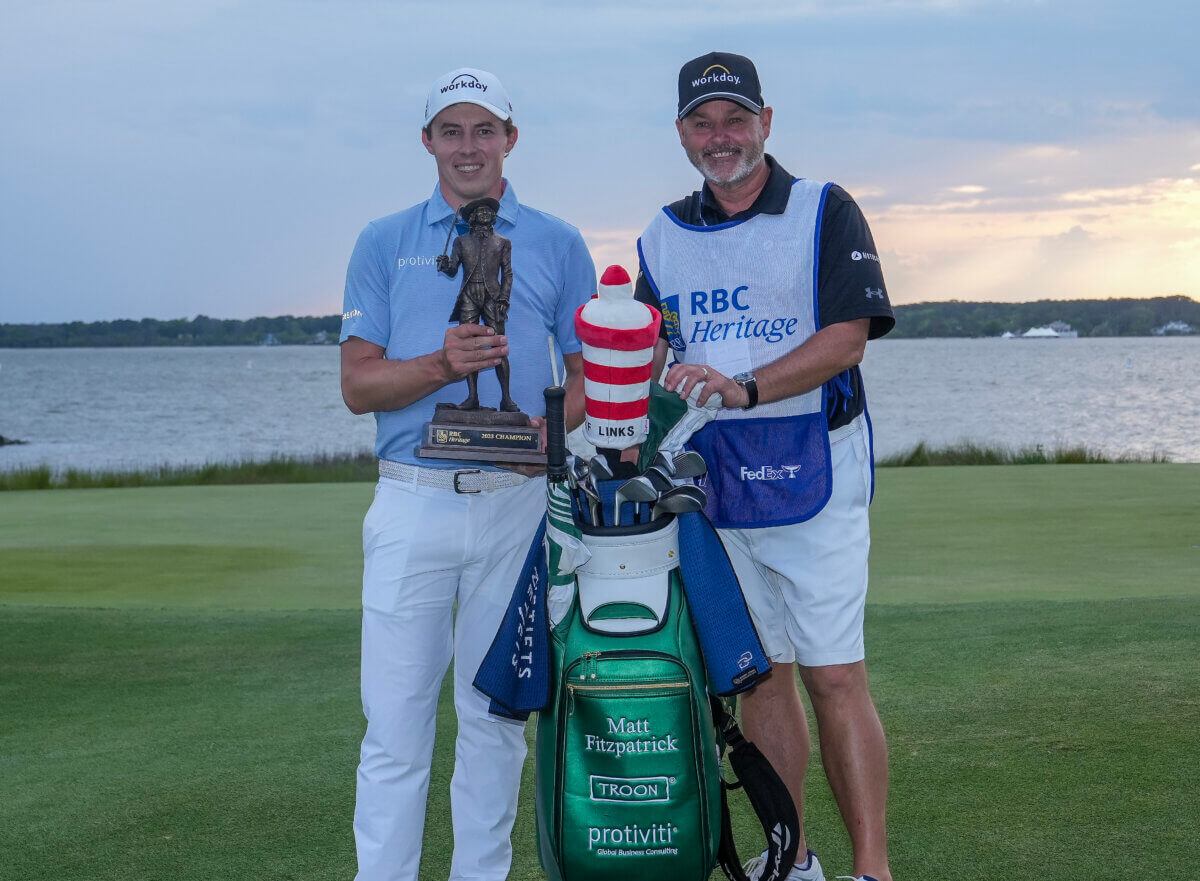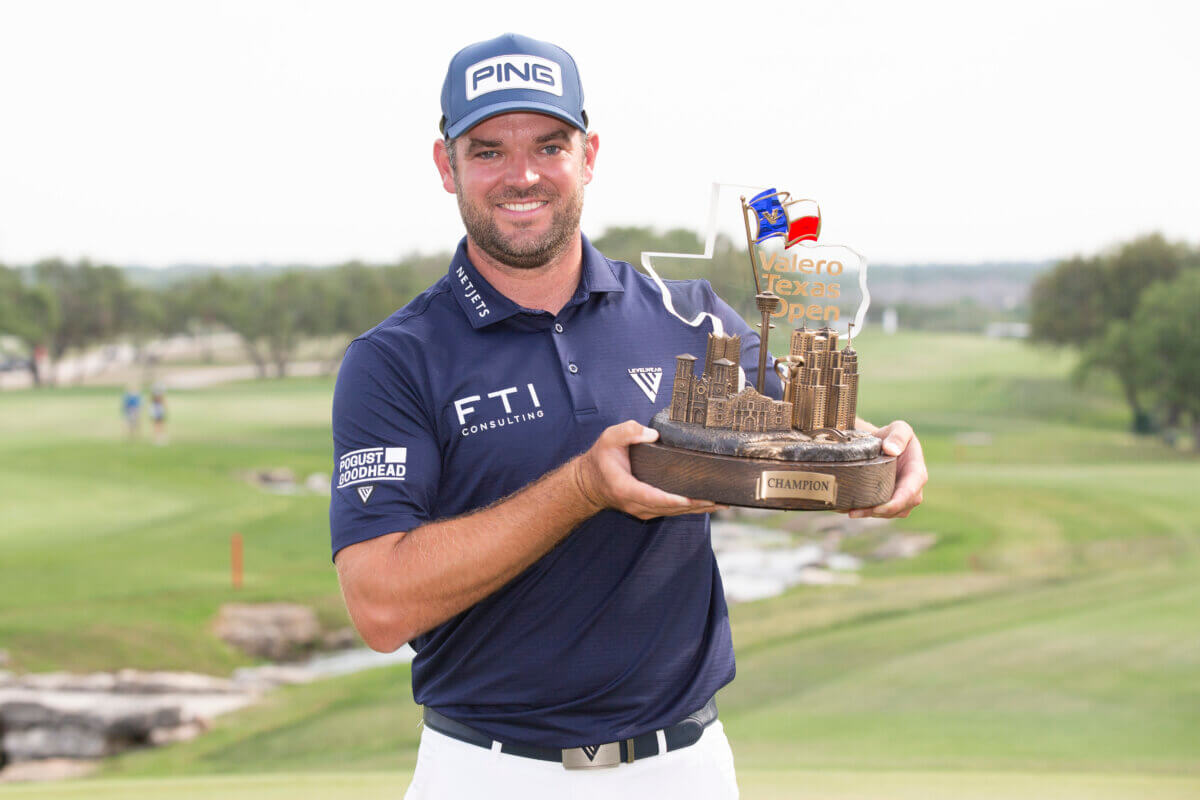Two-time WGC-Match Play-winning caddie John Wood dishes on all things match play
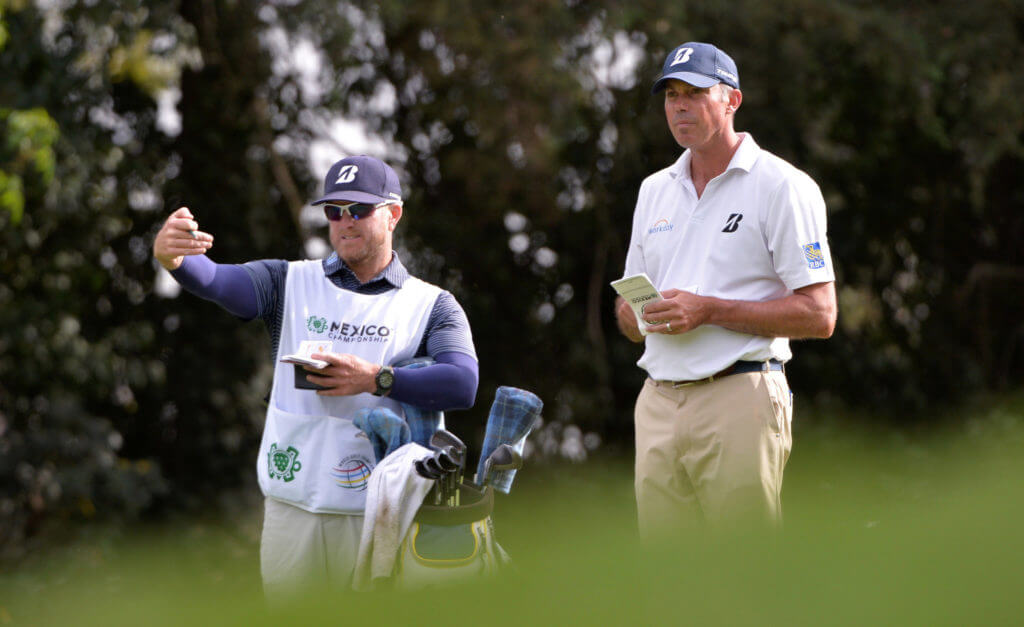
When it comes to match play, there are few caddies in the world who can boast the credentials of John Wood.
Wood, who has spent the last several years on the bag for Matt Kuchar, has caddied in an astounding seven Ryder Cups and seven Presidents Cups. In 2002, he helped guide the No. 62 seed in the 64-player field – Kevin Sutherland – to a 1-up win in the final of the WGC-Match Play Championship over Scott McCarron.
“It’s fascinating because when Kevin won, at some point in all six matches he was down and came back to win them all,” Wood said.
Ten years later in the 2012 WGC-Match Play, Wood helped No. 22 seed Hunter Mahan down No. 2 seed Rory McIlroy, 2&1 in the final.
RELATED: Caddie John Wood talks about his passion for music, new album
“Incredibly, when Hunter won, he was never down in a single match,” Wood said. “That’s six straight matches and he was never even 1 down. That’s putting pressure on people.”
One year after that, Wood was again by Mahan’s side when he lost 2&1 to Wood’s current boss, Kuchar, in the WGC-Match Play final.
With all that experience, there’s no better person to chat with than Wood with the 2019 WGC-Match Play Championship upon us this week at Austin Country Club.
Here’s TCN’s exclusive interview with Wood on all things match play…
TCN: What’s the biggest difference between stroke play and match play for a caddie?
Wood: I would say the immediacy of it. In true match play it feels like a Sunday in contention from the first tee shot on the first day. You kind of look at it as each hole is a tournament unto itself and you either win, lose, or tie. But then, when you’re on the next tee, it really doesn’t matter what happened on the last hole. It’s a brand-new contest. Win and get THIS point.
For a caddie, during a regular event, you watch your playing partners, but you don’t really care what they’re shooting, good or bad. It doesn’t matter or have any influence over how you approach a hole or a shot.
To me, there’s two things you really want to do in match play: 1. Put Pressure on your opponent; and 2. Never let him think you’re out of a hole. – John Wood
In stroke play, you wouldn’t even think about how a playing partner was playing until the last nine holes on Sunday — and then only if you were in contention.
In match play, you truly need to pay attention and be aware of them. Not only how they’re scoring, obviously, but how they look to you. Confident or shaky? Struggling with a certain shot? Hitting one shot in particular very well? How do they look putting? Is it a struggle or does it look easy for them early on?
All these things you need to keep in the back of your head, because they’ll have an influence on how your strategy will develop through any match.
TCN: Match play, by nature, seems like a more aggressive format. Is the strategy to just fire at the pins all day?
Wood: Absolutely not. I think for the most part, you play your own game as you would in a stroke-play event. You don’t want to needlessly fire at a difficult pin just because it’s match play. Because if you don’t pull off the shot, there’s a good chance you’re handing your opponent a hole with a par, rather than forcing him to make a birdie.
To me, there’s two things you really want to do in match play: 1. Put Pressure on your opponent; and 2. Never let him think you’re out of a hole.
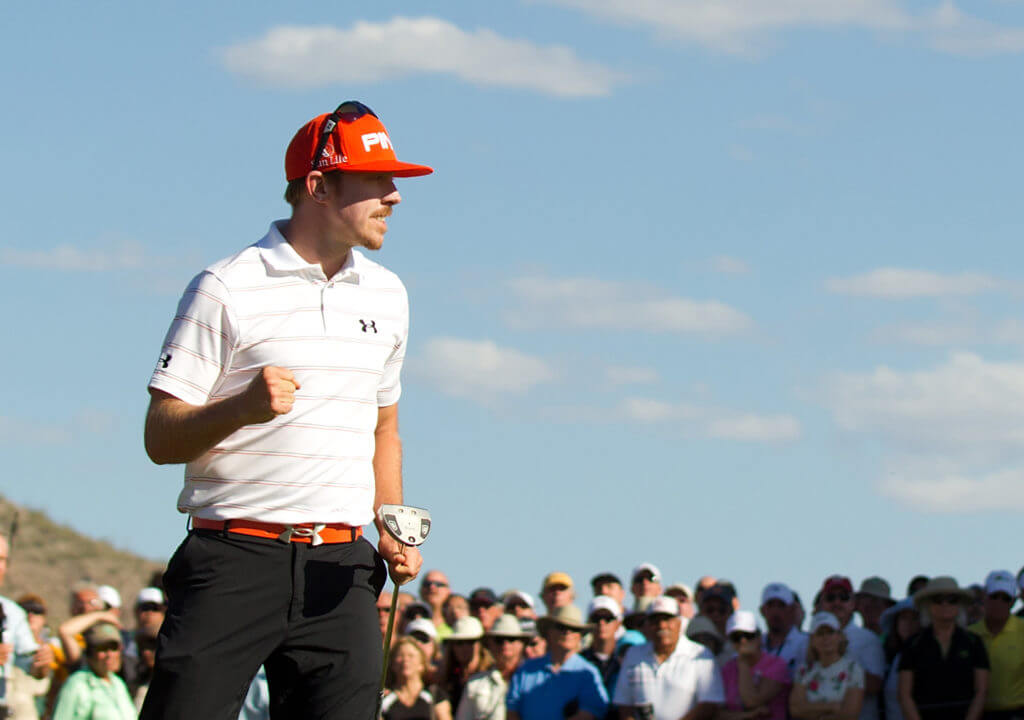
You do this by doing very simple things. Hit the fairway. Put your ball on the green. Even when you are in trouble — say you hit a drive into an awful spot in the trees or a terrible lie in a fairway bunker. The natural inclination is to try the hero shot. I tend to think the opposite is the key. Get your ball back in play. Knock it out down the fairway for a wedge shot. If you try the hero shot when your opponent is in good shape, most likely you’re going to hand him a hole and you’re going to make it easy.
No pressure.
If you pitch out or get it up to somewhere around the green, you’re still in it. You’ve still got a chance at par, and most importantly, your opponent knows that. So, he knows he’s still got to make birdie to win the hole, which keeps pressure on him. If you try the hero shot and hit a tree, or leave the ball in the bunker, all of a sudden all he has to do is get the ball on the green anywhere and two-putt, which for professionals is fairly easy.
Get your ball out of trouble and into the short grass, and PAST his ball so he has to play first and there will still be pressure on his shot.
TCN: What do you enjoy most about match play?
Wood: Well, what I like most was the old match play, where every day you could be packing your things, the immediacy of it (Editor’s note: Since 2015, the WGC-Match Play implemented a round-robin to start, assuring each player at least three matches). You have a very simple goal, and if you don’t accomplish it, you go home. I just love that kind of golf, where every hole you play is basically a point. Win or go home.
TCN: What’s the most difficult aspect of caddying in match play?
Wood: I would say the most difficult thing about match play is when your opponent is just on. If it’s stroke play and your playing partner is having a hot day, you really don’t care. You know you’ve got 72 holes and if you’re playing well you’ve got plenty of time to catch up. There’s no rush.
If you get down in a match early, and your opponent seems to be firing on all cylinders, it becomes difficult to figure out how to win a hole. A good example of this was just last year. We played Kevin Kisner in the morning match on Saturday. Kevin got out to a lead and was playing very well, but so was Matt, and all day I still felt like we had a good chance to win the match.
MORE: The Caddie Network’s 2019 PGA Tour caddie survey
But on the back nine, every time we had the advantage, Kevin clutched up and made a longer putt or got a ball up and down that you didn’t really think he would. You’re always looking for opportunities, and it felt like every time we had an opportunity, he shut the door. But it was so fun because they were both playing so well. We ended up losing 1 down.
TCN: Have you ever witnessed any gamesmanship? If so, what kinds of things were done and how did you and your player react?
Wood: Gamesmanship is a tricky thing.
Certainly, there are guys who try to employ it, but the best defense is to think in your mind, “Gosh if he’s got to resort to stuff like that, he’s not going to beat me.”
And if your opponent is using it and you’re letting it get to you — even if you don’t think you are — you’re thinking about it and it’s distracting. Guys who use verbal stuff, saying things to put bad thoughts in his opponent’s head, or constantly moving when it’s his opponent’s turn to play, or playing very slowly on purpose, I’m not a fan of things like that.
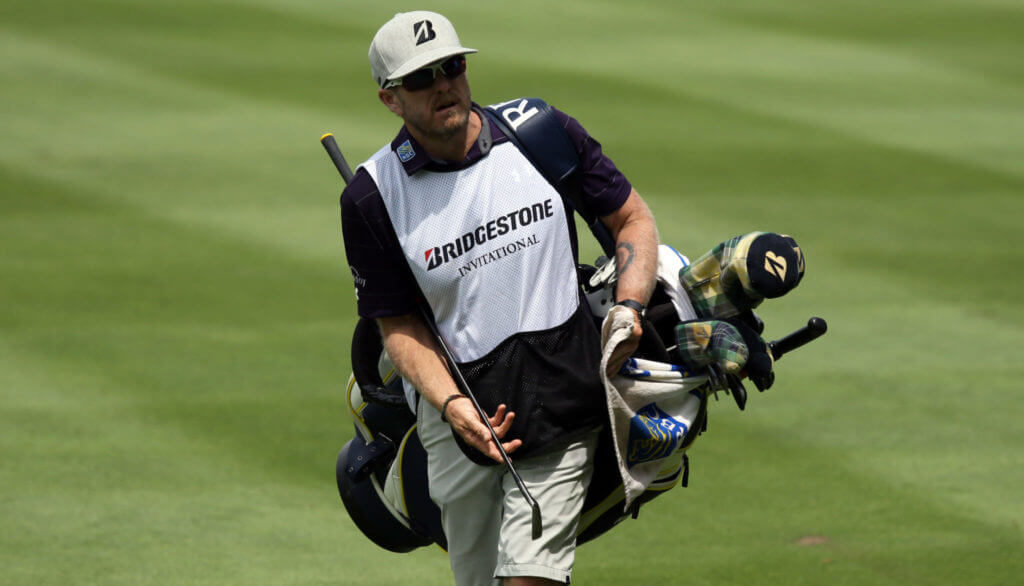
But let’s say you’re second to play to a risk-reward hole, like No. 13 this week at Austin Country Club. It’s a sometimes drivable par 4, but with water all down the left and in front of the green. I think something like taking out your driver immediately when you get to the tee like there’s no way you’re not going to try and drive it, just to put that in your opponent’s thought process, I think that kind of stuff is fine.
But mostly, you just ignore it or laugh at it, maybe joke about it with each other as your walk down the fairway to take away its power.
TCN: What’s the coolest moment or shot you’ve witnessed/been a part of in match play?
Wood: That’s a tough one, there have been so many, but I would have to say when Hunter made a 50-footer over a big swale on 17 at Valhalla in the 2008 Ryder Cup to go 1 up against Paul Casey.
We were all square and the matches looked like they could go either way at that point, it was very close. Hunter hits a poor wedge well right and short of the pin. So he hits this putt and it’s got some steam on it, and initially I thought, “please slow down, please slow down,” but as it crawled over the top of the ridge you could tell it was right on line, you just hoped it would catch a lot of the hole and go in or at least get slowed down.
It went in dead center. Captain Azinger was right there off the side of the green, the huge crowd went ballistic and so did I.
That was definitely the most excited I’ve ever been on a golf course. Paul ended up birdieing 18 to halve the great match but the putt Hunter made on 17 would be tough to top.
TCN: This week’s WGC-Match Play is a tournament you’ve been the winning caddie at twice before. First with Kevin Sutherland (2002) and again with Hunter Mahan (2012). What were those victories like?
Wood: Winning with Kevin Sutherland in 2002 was a much different experience than winning with Hunter in 2012. With Kevin, I think we were both excited to have just qualified for the event. Sure, we wanted to play well and win some matches, but you never know how those things are going to work out.
Anyway, we played David Duval in the first match on Wednesday. David, at the time, was No. 2 in the world and he was an assassin. Now, David’s a great guy, but back then when he put on those Oakleys and you never saw his eyes, and he had no weaknesses in his game, he was scary. So, we are 2 down with two to play, and I swear to God I’m walking to the 17th tee saying to myself, “Well, it’s OK. I can drive home tonight and be on my snowboard up in Tahoe by 9 a.m.” A few extra days off before the next tournament and I was going to spend all of them up in Tahoe.
So, what happens? Kevin birdies 17 and 18, then the second playoff hole, and we win the match. From that point on, it felt like we were playing with house money. It helped that Kevin was playing great, obviously, but just getting to the second round, it felt like everything else that week would be gravy. It cost me four days a of snowboarding though!
With Hunter, he was playing great coming in, and Hunter was fantastic at match play. So tough. He was so difficult to play because of what I talked about earlier. He put pressure on you from the first hole and kept it on you all day. He’s going to hit nearly every fairway; he’s going to hit nearly every green and he’s a very good putter. Even though his short game wasn’t the greatest, he hit it so good he was just right there and in every hole.
He won that year in 2012, and then the very next year, he made it all the way to the finals, ironically against my current boss, Matt Kuchar. So, Hunter won 11 straight matches against the best in the world from 2012-2013. That’s one of my favorite memories.
TCN: Did you learn anything about Kuchar in that final against Hunter that helps you with him in match play now?
Wood: I didn’t really learn anything new about Kooch that day. I mean, you knew he was strong in every facet of his game and much like Hunter, he wasn’t going to give you any holes. To my memory, Matt got way up early and Hunter started chipping away, win a hole here, win a hole there, and I believe heading to 12 or 13 we were only 1 down.
Hunter stuffs an 8-iron into the par 3 about six feet and I’m walking down thinking, “OK, we’re going to square it here and we’ve got all the momentum.”
Before we got to putt, Kooch rolled in about a 15-footer and we never quite caught him. That’s match play sometimes.
TCN: Finally, do you wish there were more match play events, or is one per season enough?
Wood: I think one is probably enough, though it’s not true match play until Saturday.
It would be very difficult to tell the sponsors and TV people to fork up a tremendous amount of money and you didn’t even know if Tiger, or Rory, or Phil, or DJ would be there on Thursday, much less for the weekend.
Give me one match-play event and then the huge ones at the Presidents Cup and Ryder Cup every year and I’m satisfied.
I’ll tell you one idea Matt floated that I thought would great for the Tour Championship/FedExCup: Start the Tour Championship Wednesday and play a full 72-hole, stroke-play event ending Saturday. You calculate the FedExCup points and Sunday it’s match play No. 1 vs. No. 4 and No. 2 vs No. 3 in the morning. In the afternoon, those two winners face off for the FedExCup. True match play.
I would love something like that.



